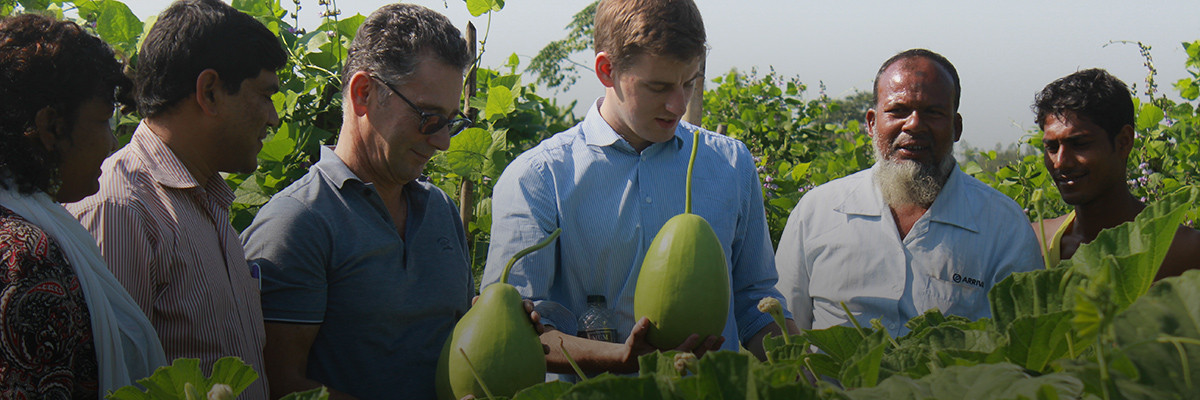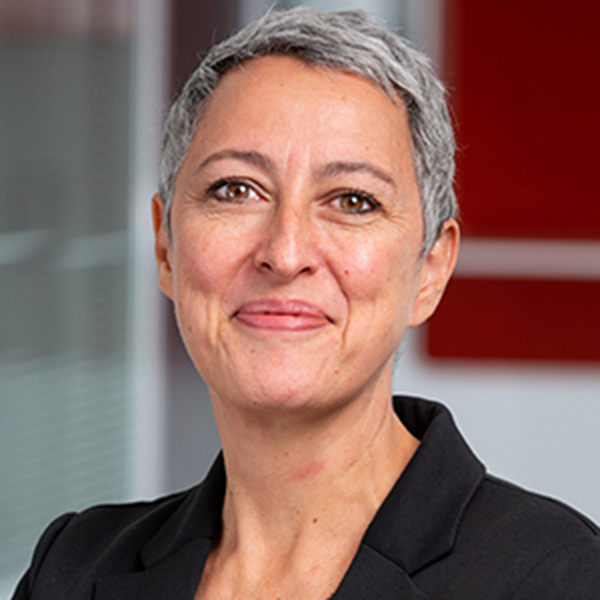
Photo: Syngenta
As part of BSR’s Business Leadership for an Inclusive Economy initiative, we are running an interview series with thought leaders from business, government, civil society, academia, and philanthropy. Their voices and perspectives will help deepen our conversation on how we can build a more inclusive economy and how business can most effectively contribute to that vision. We spoke to Juan Gonzalez-Valero, head of public policy and partnerships at Syngenta, about the Good Growth Plan and how being an inclusive company is part of their business strategy, particularly as they work with smallholder farmers.

Cecile Oger: What would you say an inclusive economy looks like? And what does it mean for a company that is engaged in agriculture in 90 countries around the world?
Juan Gonzalez-Valero: At Syngenta, inclusivity is included in our core strategy. We put the farmer at the center of our solutions. That means we want to develop new solutions and put our innovation capacity in service of those farmers. In practice, it means that we really try to develop solutions together.
As part of the Good Growth Plan, we have already reached about 17 million smallholders around the world; we look at how we can increase or improve the quality of the business we do with them. It can spread from the product all the way to interaction through training and knowledge-sharing. Last year, we reached 4.8 million of our customers through our training and train-the-trainer programs.
Oger: Do you feel an urgency for a more inclusive economy now?
Gonzalez-Valero: I think the inclusive economy has always been urgent. If you want to develop rural communities more sustainably, you need to actually bring them closer to markets. Those who have access to better markets will develop the need to get better input to increase their productivity.
We believe smallholders need to be part of the solution of global food security, so we need to find ways to become as inclusive as possible.
Oger: Good growth comes from the small farmers and the smallholders. What is the biggest challenge from your perspective?
Gonzalez-Valero: One of the challenges is an economic one—with smallholder markets, you have to adjust your cost base to the realities of what you can achieve in those markets. You need a fair share of value on the ground. Value sharing is working quite well, but still, those smallholder segments that are too far removed from good marketplaces are more difficult to reach. If a farmer can’t sell, he can’t buy—this is where we need to be very careful in the way we approach those markets.
Another challenge is how to make it credible and transparent and put measures in place that really show what is achieved in an unbiased way. I’m not aware of many companies that actually went to the same level of rigor as we did in setting up the measurements and transparency necessary to share and be open about what is achievable and where we have more challenges. That is a big part of our work as well.
The third challenge is to constantly build the links that reinforce the plan and strategy. You always run the risk of having good systems established that support the whole thing, but the bureaucracy slows down the innovation potential that an organization has.
Oger: How well is the Good Growth Plan integrated into the company strategy?
Gonzalez-Valero: I always say that it’s not a sustainability strategy, it is the need to measure the sustainability of our strategy. We started with laying out what a sustainable agricultural production system should deliver and what the role of technology is within that more complex system.
We published this triangle of technology, people, and land, which has also inspired the World Economic Forum New Vision for Agriculture. If you consider the triangle, you can derive different outcome and success indicators that a good system should be measured against. That’s resource efficiency—the quality of the solutions and the benefit they bring to the rural economy overall. And that’s what the Good Growth Plan does—measuring those outcomes.
Oger: You mentioned developing solutions with the farmers. Do you actually include them in new products and services development? How does it work in practice?
Gonzalez-Valero: Let’s look at the rice industry as an example. Rice is still underperforming in many respects around the world. There are research efforts to optimize the germplasm of rice, but that’s only one part of the solution.
The “pain points” of the farmer are not just the productivity or the quality of the plant—there are many other elements, among them labor intensity, water intensity, and diseases that limit the productivity of the crop. To develop a more inclusive solution for the farmers, you need to take those pain points into the development of the business solution.
We try to understand the real problems to come up with integrated offers. Often this means the combination of solutions. Then, you can start moving forward. That’s the way you want to approach those markets.
Oger: How does gender factor into the Good Growth Plan? Do you have a strategic approach to women?
Gonzalez-Valero: We are very much aware of the role of women in agriculture. Women are a big part of the workforce, and they play an important role in execution, especially in smallholder communities.
Each market is a little different, and we encourage sensitivity in the way we approach them. In some cultures, women are not allowed to participate in meetings with men, for example. If you don’t have females in your salesforce, you will never reach women farmers.
In other places, adjusting loyalty programs to the needs of women is also quite interesting. Although women are not always visible in decision-making, they have much more power within the households, often controlling the income or what is spent. If you build incentive systems that are inclusive of the needs of women, you can be quite successful in those kinds of environments.
These are just small examples that I’ve observed, but the business, under local conditions, is looking into this very carefully and determining how it can be more inclusive for women.
Oger: How do you think BSR can best contribute to realizing a more inclusive economy? How would you see our role as an organization?
Gonzalez-Valero: I think the research that you’re doing can be very helpful. Everything needs to be fact-based, and having access to that information is quite important. If organizations need help in one respect or another, then they may approach you.
Read more perspectives on Business Leadership for an Inclusive Economy.
BSR’s latest sustainability insights and events straight to your inbox.
Let’s talk about how BSR can help you to transform your business and achieve your sustainability goals.
